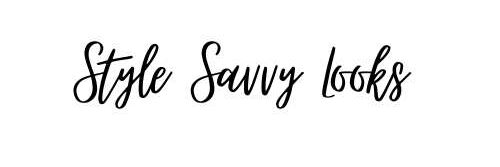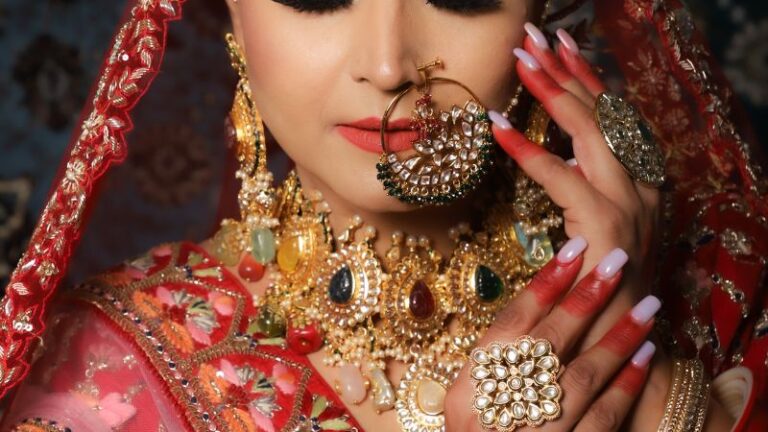In the dynamic realm where style meets storytelling, the intersection of fashion and film represents a captivating fusion of two artistic expressions. This symbiotic relationship involves deliberately crafting characters’ attire to communicate narratives beyond words. The garments become a visual language, a silent dialogue that enriches the cinematic experience.
Iconic movie outfits possess a profound influence that extends far beyond the silver screen. These garments become cultural touchstones, shaping trends, inspiring fashion movements, and embedding themselves in the collective memory of audiences worldwide. From Audrey Hepburn’s timeless elegance to superheroes’ emblematic suits, these outfits leave an indelible mark on the fabric of popular culture.
Purpose of the Blog: Exploring the Most Memorable and Influential Movie Outfits
This blog embarks on a journey through the rich tapestry of cinematic fashion, aiming to delve into the intricacies of the most memorable and influential movie outfits. By dissecting the artistry behind these garments and understanding their impact, we seek to unravel the threads that connect fashion, film, and cultural phenomena.
The Power of Costume Design
Importance of Costume Design in Filmmaking
Costume design is not merely about dressing characters; it is a pivotal element in storytelling. Costume designers contribute to the visual narrative through meticulous attention to detail, providing insights into characters’ personalities, backgrounds, and arcs. The carefully curated wardrobe becomes an integral part of the storytelling canvas.
Role of Costume Designers in Shaping Characters and Narratives
Costume designers play a transformative role in the filmmaking process. They collaborate closely with directors, actors, and other creative stakeholders to bring characters to life through clothing choices. Every fabric, color, and accessory is a deliberate decision, shaping characters and influencing the overall narrative.
Examples of Legendary Costume Designers and Their Contributions
The annals of film history are adorned with the names of legendary costume designers whose contributions have left an indelible mark. From Edith Head’s prolific career defining Hollywood’s Golden Age to contemporary visionaries like Sandy Powell, we will explore the masterful work of these artisans and their lasting impact on cinematic costume design.
Timeless Classics
Audrey Hepburn’s portrayal of Holly Golightly in “Breakfast at Tiffany’s” introduced the world to a fashion icon. The little black dress designed by Hubert de Givenchy epitomizes elegance and simplicity. We’ll delve into the design nuances, the symbolism behind the dress, and its role in shaping Holly’s character.
Marilyn Monroe’s White Dress in “The Seven-Year-Old Itch”
The iconic white dress scene featuring Marilyn Monroe standing over a subway grate is etched in cinematic history. We’ll explore the creation of this legendary moment, discussing the collaboration between Monroe and costume designer William Travilla. The dress captivated audiences and became an enduring symbol of Hollywood glamour.
Vivien Leigh’s Green Curtain Dress in “Gone with the Wind”
The sweeping historical epic “Gone with the Wind” showcased the grandeur of the Old South, and Vivien Leigh’s green curtain dress became an unforgettable piece of that legacy. We’ll analyze the historical context, the significance of the dress in Scarlett O’Hara’s character arc, and the craftsmanship behind its creation.
Impact of These Outfits on Fashion Trends and Cultural References
These iconic outfits transcended the confines of the film industry, leaving an indelible mark on fashion trends and cultural references. We’ll explore how Audrey Hepburn’s little black dress set a standard for timeless chic, Marilyn Monroe’s white dress influenced fashion photography, and Vivien Leigh’s green curtain dress became synonymous with the allure of Southern charm. Examining the ripple effect on subsequent generations of designers and the continual homage paid to these outfits, we’ll uncover the enduring impact on the intersection of fashion and film.
Genre-Specific Fashion
Superhero films have become a dominant force in the cinematic landscape, and their characters are often defined by their distinctive costumes. We’ll delve into the evolution of superhero costumes, examining the influence of comic book aesthetics and the transformation of iconic characters on the big screen. From Spider-Man’s web-slinging suit to Wonder Woman’s warrior attire, we’ll explore how these costumes contribute to the visual identity of the superhero genre.
Period Costumes in Historical Dramas
The allure of historical dramas lies in their storytelling and the meticulous recreation of bygone eras through costume design. We’ll analyze the intricacies of period costumes, exploring how designers transport audiences to different historical epochs. Whether it’s the luxury of Elizabethan gowns or the tailored elegance of the Roaring Twenties, we’ll examine how period costumes contribute to the authenticity and atmosphere of historical films.
Futuristic Fashion in Science Fiction Films
In science fiction, costume designers envision fashion for the future. We’ll explore the creativity behind futuristic fashion in sci-fi films, from sleek spacesuits to avant-garde ensembles. Examining iconic outfits from classics like “Blade Runner” or “The Fifth Element,” we’ll discuss how these designs reflect speculative visions of the future and influence real-world fashion trends.
Impact of Genre-Specific Fashion on Culture and Style
The costumes in these diverse genres serve the narrative and influence broader cultural conversations. We’ll explore how superhero costumes become cultural symbols, sparking fan debates and merchandise trends. Historical drama costumes often inspire fashion revivals, with elements making their way onto runways. Futuristic fashion, however, challenges contemporary norms and pushes the boundaries of what is considered stylish. By dissecting these genre-specific fashion trends, we aim to understand the symbiotic relationship between film genres and the ever-evolving world of fashion.
Collaborations and Inspirations
The marriage of fashion and film often extends beyond the screen through collaborations between visionary fashion designers and filmmakers. We’ll explore notable partnerships, such as the longstanding alliance between director Baz Luhrmann and costume designer Catherine Martin or the iconic collaboration between director Sofia Coppola and costume designer Milena Canonero. By examining these collaborations, we gain insights into how the creative visions of both industries intertwine, elevating the visual storytelling experience.
Instances Where Movie Outfits Have Inspired Real-World Fashion Trends
Movie outfits possess the power to transcend fiction and shape real-world fashion trends. We’ll delve into instances where iconic garments became cultural phenomena, influencing the fashion landscape. From the impact of Diane Keaton’s menswear-inspired looks in “Annie Hall” to the resurgence of 1940s fashion after the release of “Casablanca,” we’ll analyze how these on-screen ensembles continue to inspire designers and consumers alike.
Recreating Iconic Movie Outfits for Modern Fashion Shoots
Editorially, iconic movie outfits often serve as muses for contemporary designers and photographers. We’ll explore modern fashion shoots that pay homage to classic cinema, witnessing the reinterpretation and evolution of legendary looks. By examining the interplay between nostalgia and innovation, we aim to understand how these recreated ensembles bridge the gap between the golden age of cinema and today’s fashion landscape.
Costume design is a meticulous art form that goes beyond aesthetics. We’ll uncover the intricacies of the creative process, exploring how designers meticulously research, conceptualize, and craft outfits to bring characters to life. From historical accuracy to symbolic choices, we’ll delve into the thought processes that shape the visual identity of characters through their wardrobes.
Challenges Faced by Costume Designers in Bringing Characters to Life
Behind the glamour of the silver screen lies a myriad of challenges costume designers face. We’ll explore the obstacles and complexities of creating outfits that seamlessly integrating with characters and narratives. From tight budgets and time constraints to the need for authentic representation, we’ll shed light on the often-unseen challenges that costume designers navigate to realize their artistic visions.
Interviews with Renowned Costume Designers About Their Experiences
We’ll feature interviews with renowned costume designers to provide a firsthand perspective. Through their insights, experiences, and anecdotes, readers will gain a deeper understanding of the craft. These interviews will offer a glimpse into the collaborative nature of filmmaking, the impact of technological advancements on costume design, and the industry’s evolving landscape through the eyes of those who shape its visual language.
The Evolution of Movie Fashion-How Fashion in Film Has Evolved Over the Decades
The history of movie fashion is a dynamic tapestry that has evolved alongside broader societal changes and technological advancements. We’ll embark on a journey through the decades, tracing the evolution of cinematic style. From the glamour of Hollywood’s Golden Age to the rebellious fashion of the 1960s and the futuristic aesthetics of contemporary cinema, we’ll explore how film fashion reflects and responds to the spirit of each era.
Influence of Societal Changes on Movie Outfits
Movie outfits serve as mirrors reflecting the cultural, social, and political shifts of their time. We’ll analyze how changes in societal norms, gender roles, and artistic movements influence fashion choices in film. Whether it’s the impact of the women’s liberation movement on on-screen attire or the reflection of counterculture in rebellious character wardrobes, we’ll explore the symbiotic relationship between the big screen and the world outside the cinema.
Comparisons Between Classic and Contemporary Movie Fashion
We’ll examine how timeless styles persist and adapt and draw parallels between classic and contemporary movie fashion. From the elegance of the Golden Age to the minimalist aesthetics of modern cinema, we’ll highlight the enduring motifs and innovative approaches that define each era. By comparing iconic outfits across generations, we aim to showcase the threads of continuity and how filmmakers pay homage to the rich history of cinematic fashion.
Iconic movie outfits have become more than just on-screen garments; they are cultural symbols that resonate deeply with fan communities. We’ll explore fans’ emotional connection with these outfits and their impact on fan identity. From forming communities around specific characters to creating fan art, we’ll explore how movie outfits inspire a sense of belonging and shared enthusiasm.
Rise of Cosplay and Fan-Driven Fashion Events
The phenomenon of cosplay has transformed fan engagement, allowing enthusiasts to embody their favorite characters. We’ll investigate the rise of cosplay culture and its influence on fashion events. From Comic-Con to themed parties, we’ll explore how fans showcase their creativity through intricate costume design, blurring the lines between fiction and reality.
Examples of Famous Movie Outfit Recreations by Fans
Highlighting the dedication and creativity of fans, we’ll showcase notable instances where enthusiasts meticulously recreated iconic movie outfits. Whether it’s a faithful reproduction of a superhero costume or a reinterpretation of a classic ensemble, these examples will illustrate the profound impact of movie fashion on personal expression within fan communities.
Conclusion
In the grand tapestry of cinema, iconic movie outfits stand as vibrant threads that weave together the realms of film and fashion. They transcend their roles as mere costumes, becoming cultural touchstones that resonate far beyond the confines of the screen. The impact of these outfits on the film industry is undeniable, shaping characters and narratives and even influencing the trajectory of fashion trends.
As we reflect on the journey through classic and contemporary movie fashion, it becomes evident that these outfits are not fleeting moments but enduring legacies. They embed themselves in the collective consciousness, becoming benchmarks for style, elegance, and storytelling. From the glamorous Golden Age to the dynamic present, the lasting legacy of iconic movie outfits persists in shaping how we perceive, celebrate, and express ourselves through fashion.
In closing, this exploration of fashion in film serves as an invitation to appreciate the often-overlooked artistry and significance of costume design. Behind every iconic outfit is a creative process that involves meticulous research, collaboration, and a deep understanding of character and narrative. By recognizing the craftsmanship and intent behind each garment, we cultivate a richer sense of the visual language of cinema and the profound impact of fashion on storytelling.
Additional Resources
For readers eager to delve deeper into the world of fashion in film, we recommend the following resources:
- “The Art of Costume Design” by Deborah Nadoolman Landis
- “Dressed: A Century of Hollywood Costume Design” by Deborah Nadoolman Landis
- “Costume and Cinema: Dress Codes in Popular Film” by Sarah Street
- Documentaries such as “Dressed in Film” and “Sketch to Screen: Costume Design.”
For those intrigued by the intersection of fashion and film, we suggest diving into the following avenues:
- Attend local film festivals with a focus on costume design retrospectives.
- Explore fashion exhibitions at museums showcasing iconic movie outfits.
- Engage in online forums and communities discussing the latest in cinematic fashion.
Readers can deepen their appreciation for the dynamic relationship between two artistic worlds by continuing this exploration beyond the blog.




